Oyster, Blowfish, Sea Bream: Chugoku and Shikoku’s Seafood Is Anything but Ordinary
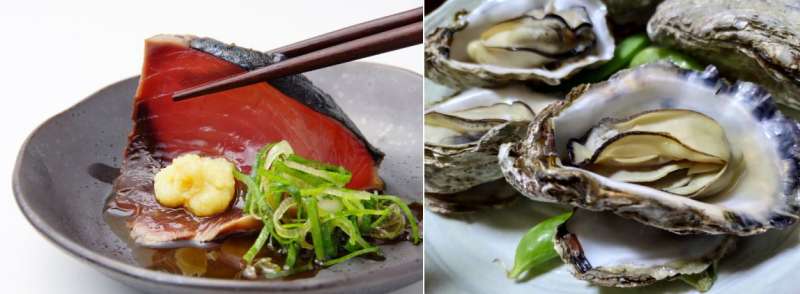
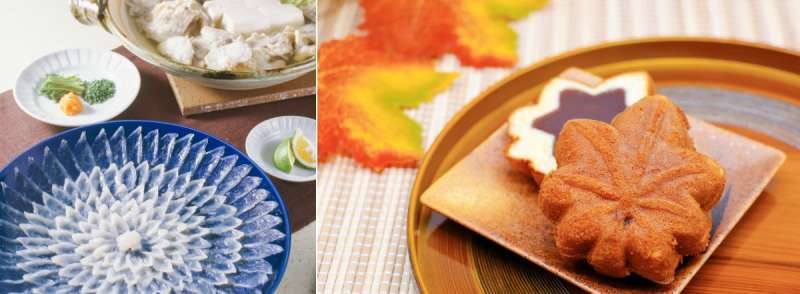
Sushi and tempura are among the most popular seafood dishes in Japan, but they’re not the only delicious ones! When you travel across the country, you’ll find that there are many other types of regional Japanese food to eat and love as well.
In this article, we introduce some of the best Japanese seafood dishes from the western regions of Chugoku and Shikoku, along with the shun (meaning 'season') when these foods are best enjoyed.
From the famous Hiroshima oysters to the Yamaguchi blowfish or fugu, here are all the Japanese foods you need to eat on your trip across the Land of the Rising Sun.
1)Oysters(Hiroshima)
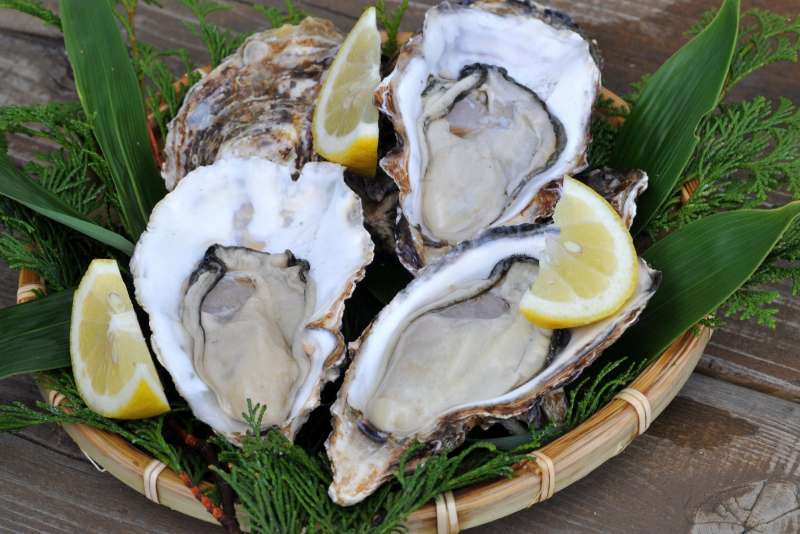
Hiroshima is popular with tourists for many reasons. Here, you’ll find Miyajima, a small island situated at Hiroshima Bay known for its magnificent vermillion torii gate. There’s also Onomichi, regarded as the starting point of the Shimanami Kaido cycling sanctuary. Miyajima is also famous for its many deer and Momiji Manju or maple leaf-shaped cakes.
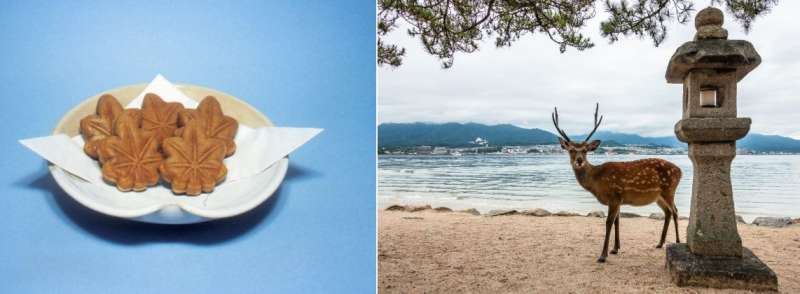
Of course, another reason to visit this region is to sample its local delicacies. Worth tasting are the oysters, the most popular seafood in Hiroshima, Japan. In fact, the region is known to have the highest production rate of oysters in the whole country.
The local oyster’s shell may be small, but its meat is large and plump, giving off a rich flavor with every bite. Oysters here are shipped out from October to May, and they’re in season from January to February.
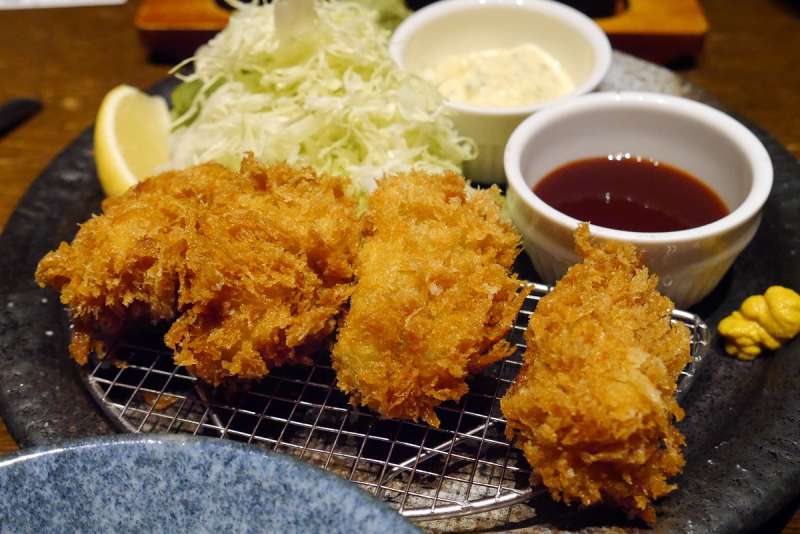
Large Hiroshima oysters are tasty whether they’re served raw or steamed, but they’re especially delicious when fried. Many local restaurants offer fried oyster set meals with rice, side dishes in small bowls, and miso soup. The batter has a crispy texture, and when you bite it, the aroma of the ocean and the mellow milky taste of the oyster spreads through your mouth!
If you’re visiting Hiroshima Prefecture during winter, try its Dotenabe or oyster hot pot, a staple dish during the cold season. The hot pot is prepared by spreading miso around the pot before boiling oysters with other ingredients like tofu and vegetables.
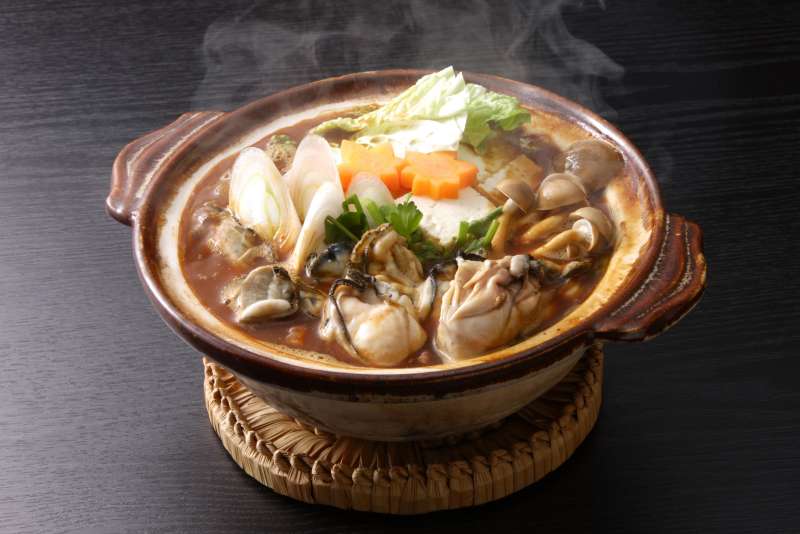
2)Fugusashi(Yamaguchi)
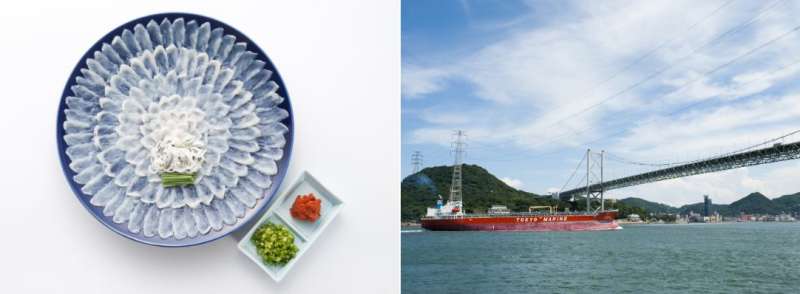
Facing the Kanmon Strait that runs between Honshu and Kyushu, Yamaguchi Prefecture’s Shimonoseki City is a treasure trove of seafood! After all, it is where the extremely famous fugu or blowfish gather for harvest from November to February. In Yamaguchi, Fugu is known to help ward off misfortune, as its local name, "fuku" is a homonym for good fortune.
There are various ways to eat pufferfish. You can eat it as sushi or as part of rice porridge. However, it’s best to enjoy it as a sashimi called fugusashi. When serving the blowfish this way, the chefs slice the fish so thinly that you can see the plate underneath it.
Raw fugu is a little chewy and has a light flavor. If you visit Yamaguchi to order the dish, be sure to add ponzu sauce, a type of Japanese seasoning with citrus juice. It also goes really well with green onions and other herbs.
3)Katsuo no Tataki or Seared Bonito(Kochi)
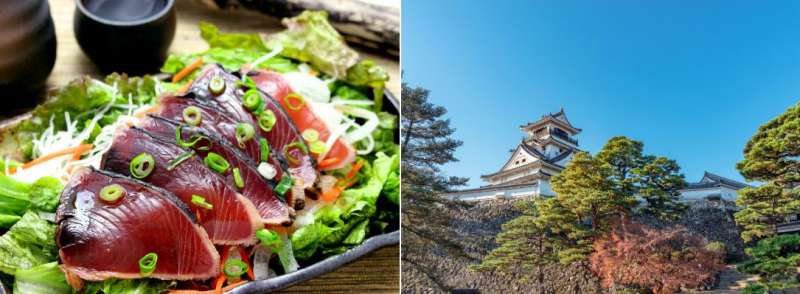
Located in Shikoku, Kochi Prefecture is home to the Shimanto River. The area also has lots of breathtaking spots overlooking the Pacific Ocean such as Katsurahama, Cape Muroto, and Cape Ashizuri.
Having access to several bodies of water, it’s no surprise that the local specialty of Kochi Prefecture is Katsuo no Tataki or Seared Bonito, a seafood dish.
Bonito is one of the most popular seafoods in Japan, but the way it’s prepared in this region is special. Bonito is caught with the Tosa traditional fishing technique called ipponzuri (fishing with a pole). Kind to nature, this is the preferred method as it doesn’t damage the fish the way nets do.
After the fish is caught, it is then grilled using the straw of rice plants. When the surface of the fish is grilled, it is cooled, cut, and sprinkled with herbs and sauces.
Yummy and fatty bonito can be enjoyed multiple times throughout the year as it has two seasons annually. April to June is the first bonito season. During this time, the fish caught appear red with a light taste. Meanwhile, September to November is the season of returning bonito, yielding tons of bonito with a chewy texture.
4)Taimeshi(Ehime)
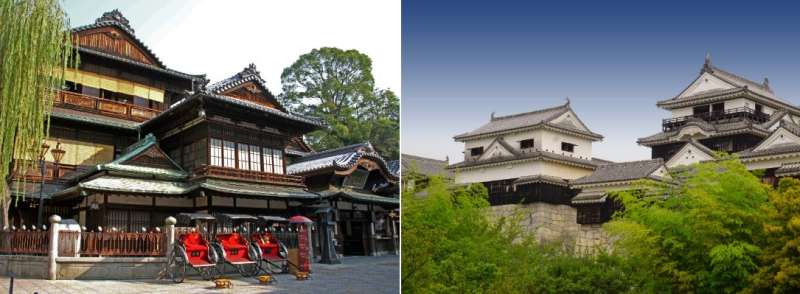
Located in the Shikoku region is Ehime Prefecture, which is famous for Dogo Onsen, one of Japan’s oldest hot springs, and Matsuyama Castle, one of Japan’s oldest surviving castles. Apart from these attractions, Ehime is known for its mandarin oranges and its red sea bream, large quantities of which are produced in Ehime. So if you're traveling in the area, make sure to have a taste of Taimeshi, a red sea bream dish that is a prized local specialty.

Interestingly, Taimeshi is prepared differently depending on where you are in the region. So if you can, make sure to travel across the prefecture to compare their unique renditions of the dish.
Taimeshi in the central and eastern regions of Ehime Prefecture, particularly in Matsuyama City, is called Matsuyama Taimeshi. This dish is made by cooking roasted sea bream in rice with kelp soup stock.
On the other hand, the Taimeshi prepared in Uwajima City in the southern part of Ehime Prefecture is known as Uwajima Taimeshi. Here, raw sea bream is soaked in a sauce containing raw eggs. It is served as sashimi laid on top of warm rice. This preparation lends rice a strong sea bream flavor with a refined taste.
Sea bream is in season from March to April when it is fatty before spawning. Time your visit around these months to enjoy one of the most popular seafood in Japan at its freshest!
Refer to the following for more information on the facilities mentioned in this article.
https://www.japan.travel/en/things-to-do/eat-and-drink/
About Chogoku/Shikoku Travel Passes
Hiroshima
https://www.japan.travel/en/destinations/chugoku/hiroshima/
https://visithiroshima.net/
Yamaguchi
https://www.japan.travel/en/destinations/chugoku/yamaguchi/
http://www.visit-jy.com/en/
Kochi
https://www.japan.travel/en/destinations/shikoku/kochi/
https://visitkochijapan.com/en
Ehime
https://www.japan.travel/en/destinations/shikoku/ehime/
https://www.visitehimejapan.com/en?_ga=2.33469118.1450401620.1610433001-1402211910.1608704151



















































